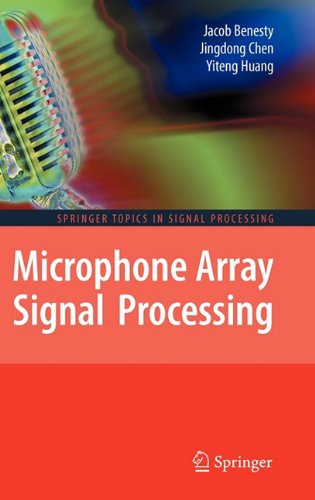

Most ebook files are in PDF format, so you can easily read them using various software such as Foxit Reader or directly on the Google Chrome browser.
Some ebook files are released by publishers in other formats such as .awz, .mobi, .epub, .fb2, etc. You may need to install specific software to read these formats on mobile/PC, such as Calibre.
Please read the tutorial at this link: https://ebookbell.com/faq
We offer FREE conversion to the popular formats you request; however, this may take some time. Therefore, right after payment, please email us, and we will try to provide the service as quickly as possible.
For some exceptional file formats or broken links (if any), please refrain from opening any disputes. Instead, email us first, and we will try to assist within a maximum of 6 hours.
EbookBell Team

4.0
96 reviewsMicrophone arrays have attracted a lot of interest in the last two decades. The reason behind this is that they have the potential to solve many important problems in both human-machine and human-human interfaces for different kinds of communications. But before microphone arrays can be deployed broadly, there is a strong need for a deep understanding of the problems encountered in the real world and their clear formulation in order that useful algorithms can be developed to process the sensor signals.
While there are many manuscripts on antenna arrays from a narrowband perspective (narrowband signals and narrowband processing), the literature is quite scarce when it comes to sensor arrays explained from a truly broadband perspective. Many algorithms for speech applications were simply borrowed from narrowband antenna arrays. However, a direct application of narrowband ideas to broadband speech processing may not be necessarily appropriate and can lead to many misunderstandings. Therefore, the main objective of this book is to derive and explain the most fundamental algorithms from a strictly broadband (signals and/or processing) viewpoint. Thanks to the approach taken here, new concepts come in light that have the great potential of solving several, very difficult problems encountered in acoustic and speech applications.
Microphone Array Signal Processing is a timely and important professional reference for researchers and practicing engineers from universities and a wide range of industries. It is also an excellent text for graduate students who are interested in this promising and exciting field